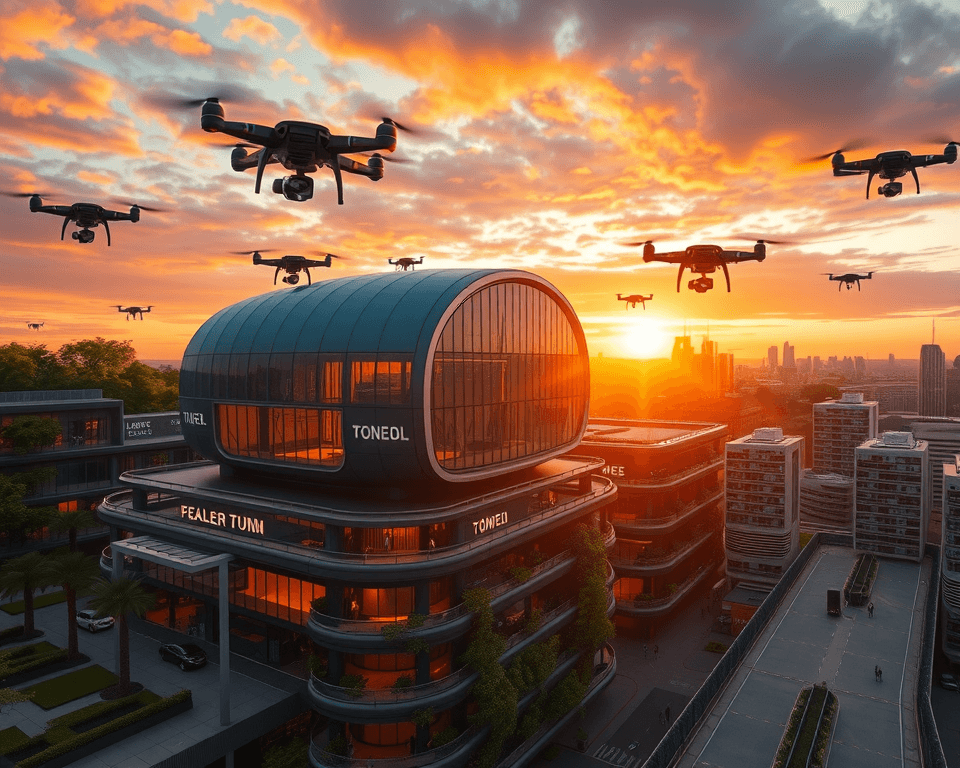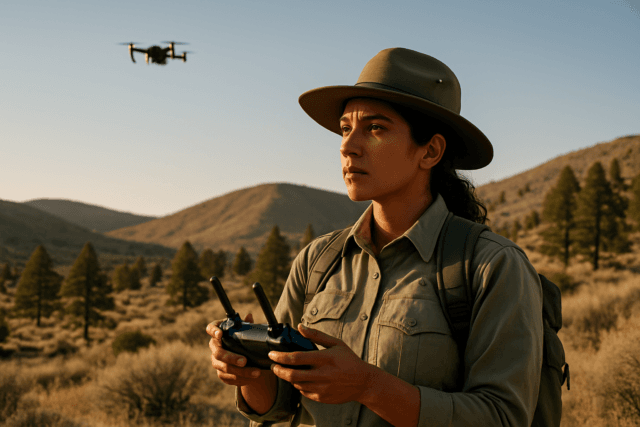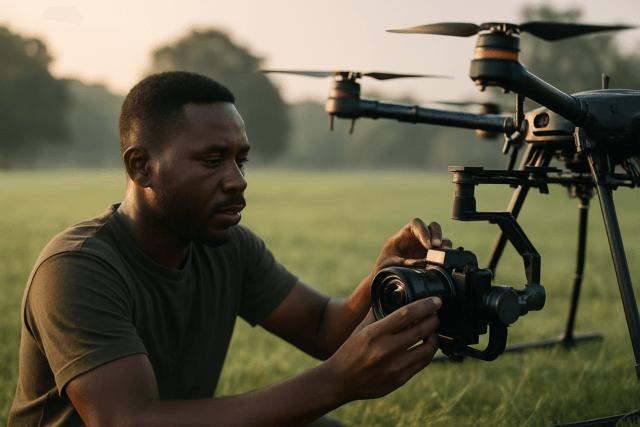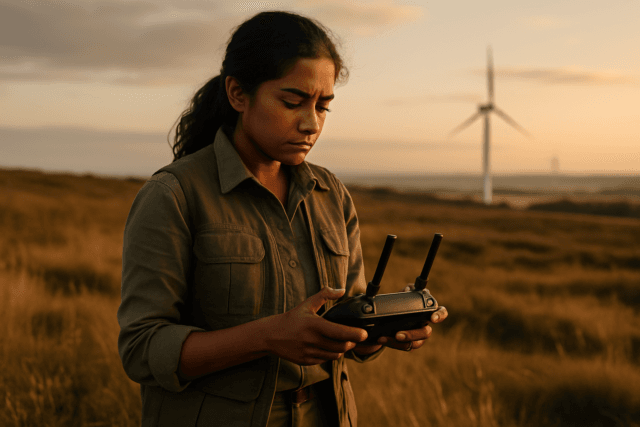The UK drone industry is soaring, presenting lucrative opportunities for businesses. However, navigating the Civil Aviation Authority’s (CAA) regulations is crucial for safe, legal, and profitable commercial drone operations. This comprehensive guide breaks down the essential rules, certifications, and best practices for flying drones commercially in the UK in 2025.
UK Drone Laws: An Overview
The UK no longer distinguishes between commercial and recreational drone flights regarding basic legal requirements. Even hobbyists must register if they meet specific weight/camera criteria, and professionals don’t need a separate “commercial license”. Instead, the focus is on the risk involved, determined by the drone type and intended flight location.
Key Regulations for Commercial Drone Use in 2025
- Registration: Anyone responsible for a drone between 250g and 25kg must register as an operator with the CAA for £10.33 annually. Anyone flying a drone, even if it’s not theirs, needs a Flyer ID by passing an online theory test.
- Height Limit: Drones cannot fly above 400 feet (120 meters) to prevent interference with manned aircraft. Fines for exceeding this limit can reach £2,500.
- Visual Line of Sight (VLOS): Operators must maintain a clear, direct line of sight with their drone at all times. Fines for flying beyond VLOS can reach £2,000. If flying using first-person view (FPV), a competent observer must maintain VLOS.
- Restricted Airspace: Explicit permission is required to fly in restricted airspace (near airports, government buildings, etc.). Unauthorized flights can result in fines up to £5,000. A 5-kilometer (3-mile) no-fly zone exists around airports; violations can incur fines up to £7,500.
- Distance from People: Maintain at least 50 meters from uninvolved people. Unsafe operations can lead to fines up to £2,500.
- Distance from Built-up Areas: Drones weighing 250g or more must stay 150 meters away from residential, commercial, or industrial zones. Violations can result in fines up to £3,000.
- Insurance: Mandatory for commercial drone operations to cover liability, damages, and equipment. Operating without insurance can lead to fines up to £5,000.
- Geofencing: The use of geofencing technology is increasingly common to enhance drone security and prevent unauthorized access to sensitive areas.
- Data Protection and Privacy: Commercial operators must adhere to data protection and privacy regulations, especially when using drones for surveillance or data collection.
Understanding the “Open,” “Specific,” and “Certified” Categories
Where you can fly depends on your drone type and the flight’s risk level. Flights fall into one of three categories:
- Open: Presents low risk to third parties; no CAA authorization needed. Open Category pilots must adhere to the following:
- The aircraft’s maximum take-off mass must be less than 25kg.
- Keep the drone within Visual Line of Sight (VLOS).
- Do not fly higher than 400 ft (120 metres) from the earth’s surface.
- Specific: More complex operations that fall outside the Open Category boundaries require CAA authorization.
- Certified: Very complex operations present risks equivalent to manned aviation. UK regulations are still being developed for this category.
The Open Category – Subcategories A1 – A3
The Open Category is further divided into three subcategories, stipulating where, what and how you can fly:
- A1 Subcategory Fly over people: This category is for drones which pose the least risk, due to their weight.
- A2 Subcategory Fly close to people: Drones up to 2kg in weight as close as 30 meters to uninvolved people (or 5m in low-speed mode for drones that have that feature).
- A3 Subcategory Fly far from people: This category is for larger aircraft and for pilots who have an A1 Transitional or A2 aircraft, but have not obtained an A2 CofC. No flights within 150m horizontally of residential, commercial, industrial or recreational areas.
Drone Licenses and Training in the UK
- Flyer ID: Required for anyone flying a drone weighing 250g or more. Obtainable by passing an online theory test. Valid for 5 years.
- Operator ID: Required for the person responsible for the drone (must be 18 or older).
- A2 Certificate of Competency (A2 CofC): Allows pilots to operate drones legally in more demanding locations and closer to uninvolved people. Complete a training course and pass a qualification exam.
- General Visual Line of Sight Certificate (GVC): Needed to apply for an Operational Authorisation (OA) from the CAA, especially for operations in the Specific category. Requires a CAA application and submission of an Operations Manual. Includes a practical flight assessment. A GVC allows pilots to fly drones up to 25kg in built up areas.
Drone Training Courses
- A2 CofC Course: Online course that covers the basics and allows you to fly light drones nearer to people.
- GVC Course: Comprehensive drone training that gets you confident and able to fly in both the Open and Specific Categories.
How to Obtain an Operational Authorisation
If your drone operations fall outside the Open Category, you’ll need an Operational Authorisation from the CAA. This involves:
- Completing an approved Ground School course.
- Passing theory examinations.
- Demonstrating practical flight competence.
- Submitting an Operations Manual to the CAA.
The Specific Operations Risk Assessment (SORA) Methodology
The CAA is replacing Operational Authorisations (OAs) with a new application process based on the Specific Operations Risk Assessment (SORA) methodology. The new process includes:
- Calculating risk: The process will help operators calculate the air and ground risk of their proposed operation.
- Risk mitigation: Operators will need to demonstrate how they will mitigate the identified risks.
Key Considerations for Commercial Drone Operators
- Airspace classifications and restrictions.
- Weather limitations and flight planning.
- Risk assessment procedures.
- Emergency protocols and incident reporting.
- Data protection and privacy regulations.
Essential Equipment for Your Drone Business
- Primary drone with redundant safety features.
- Backup drone for equipment redundancy.
- Multiple battery sets (minimum 3-4 per drone)
- Professional transport cases.
- Comprehensive spares kit.
The Future of UK Drone Regulations
From 1 January 2026, drones operating in the Open Category will be subject to product standards under a framework known as ‘Class Marking’. The UK Civil Aviation Authority (CAA) has been named as the UK’s drone Market Surveillance Authority (MSA) and will be responsible for ensuring required standards for drones are met by manufacturers, importers, and distributors, and intervening when there is non-compliance.
BVLOS operations are poised for significant expansion in 2025, with ongoing trials and regulatory developments paving the way for broader commercialisation. The CAA is currently focused on establishing routine BVLOS operations by 2027.
Staying Compliant and Safe
- Stay Updated: Drone laws and regulations can change, so staying informed is crucial. Regularly check the CAA website for updates and guidance.
- Continuous Training: Participate in refresher courses and advanced training to enhance your skills and knowledge.
- Prioritize Safety: Always prioritize safety and conduct thorough risk assessments before each flight.
- Know your drone: Until January 2026 if your drone doesn’t have a class marking, be sure to check in which categories is authorised to be flown.
- Check weather conditions: Always check weather conditions before flying to ensure safety
By understanding and adhering to these regulations, commercial drone operators can unlock the vast potential of this exciting industry while ensuring the safety and security of the skies.





